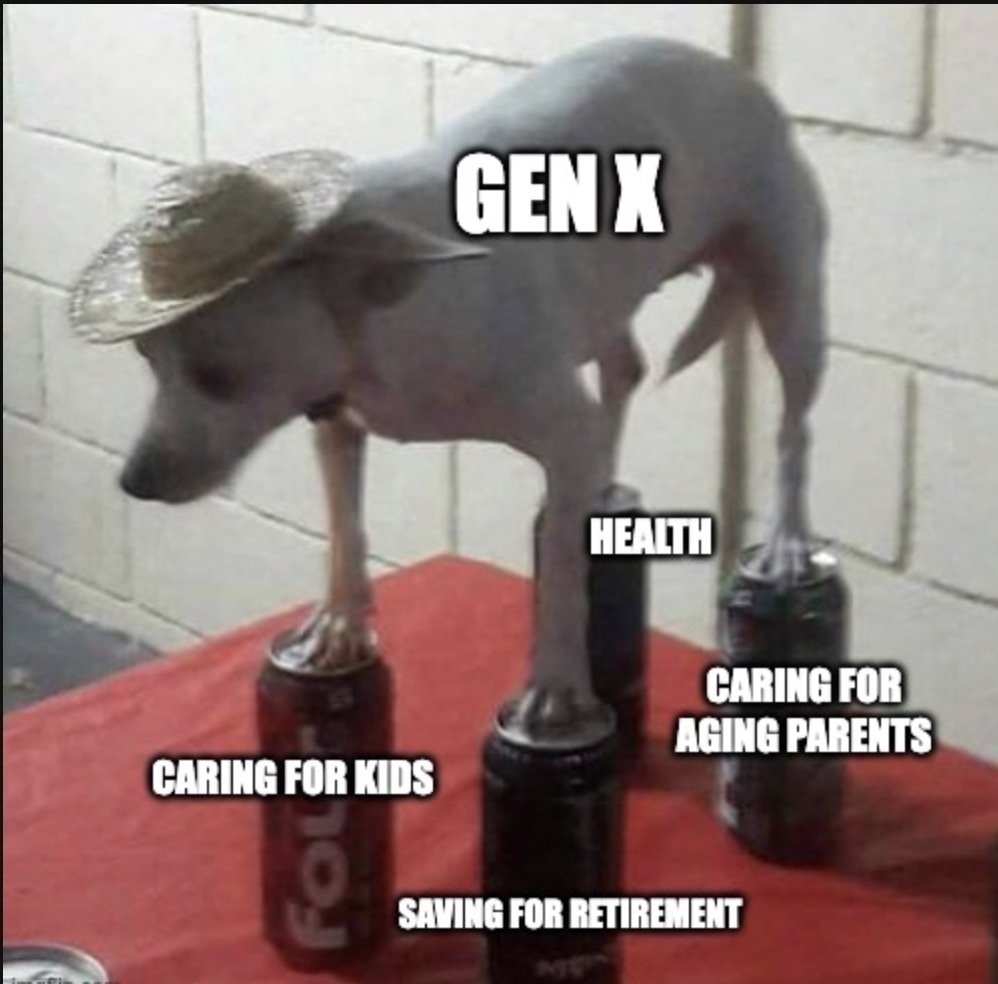When you’re vibe coding a project, don’t forget these tips:
- Clear the context window occasionally. Start with a fresh agent.
- Be clear in your intent. Use examples often.
- Be ruthless about refactoring, either on your own or with the agent’s help. Agents can quickly create spaghetti code.
This seems timely.

Want to get rich? Here’s how:
- Give yourself the title “data scientist.”
- Form your own AI company.
- Raise $30 billion. No questions asked.
Simple, really.
It’s fine. Everything is fine.

Dipping into the iOS App Pool
There’s an itch I’ve been meaning to scratch for the better part of 15 years now. And among job, family, and let’s face it, lack of motivation, I’ve never been able to get anywhere near to creating my own iOS app that I could call my own and share on the App Store. Until now.
Firstly, let’s set the WABAC machine for 15 years ago: I considered myself a somewhat competent back-end developer, and I wanted to create an app but had zero experience. This was in the early days of online learning. If there was Pluralsight or LinkedIn Learning (née Lynda Learning) around, I certainly wasn’t aware of them at the time. But I had a Mac and there was plenty of documentation online detailing how to create your own app. At the time, Swift didn’t exist. It was all Objective-C, which I objectively hated. I’m not blaming the language or framework. Rather, I lacked the patience and wherewithal to truly immerse myself in it. So the iOS app remained a dream and nothing more.
As the years passed, I had fits and starts of trying to master the Webview frameworks: those that allow you to create a web app using Javascript and/or Typescript. Then, you click a button and, magically, an iOS and Android app are born from your code. Examples include Ionic, Phonegap, etc. These were definitely more in my wheelhouse, but getting the UI to appear and behave exactly the way I wanted by way of generating code was simply too much work.
Again, I have only myself to blame. I just lacked the time and mental fortitude to figure it all out. I mean: spending hours searching Stack Overflow in order to figure out how to get this button to appear in the correct way, hiding that control when focus was on such-and-such an input? And write tests for all this? I admire the thousands of developers out there who have mastered it all. There are truly some beautifully designed apps out there. But for me: forget it. I was built of weaker stuff.
Which brings us to the current moment: AI coding agents. Of course I had used Copilot in VS Code and had heard of the benefits of IDEs like Cursor, but nothing really drove me to try it all out. That is until past-me was smart enough to attend a tech talk at work introducing us all on how to leverage an agent to generate code for you at the project level.
I’m not talking about going into ChatGPT and asking it to create a function to sort some integers, or parse a date. Instead, I’m telling the agent: “You are a senior engineer in charge of designing an app that does x, y, and z. Generate 1-point stories for the project that junior engineers can use to create the app all the way to deploying it to production.”
Could I use this technique to create that iOS app I’ve been meaning to do all this time? It felt like cheating. Alot. I don’t know a lick of SwiftUI and I am not up on the latest iOS design specs and best practices. On the other hand, I also knew that life is short. This was something I really wanted to do. I concluded that as long as I was honest with myself and others about where my own human efforts ended and the AI-generated code started, then this was still a good effort and ought to be fun. And it was.
So I humbly introduce my first iOS app: Prime Number Finder. It’s a simple app that tells you if a number is prime or not. That’s it. Couldn’t have done it (at all) without Cursor and Claude, my two coding buddies.
If you’re curious, download it from the App Store, try it out, and please leave any feedback, positive or negative. I’ve already started an issue list in GitHub as there’s a lot more I’d like to add.
Oh, and this blog post is 100% written by me. Pinky swear. So, thank you for reading!

This is one of those rare takes that really nails it. I love the comparison with the industrial and PC revolutions. I posted something similar (but not nearly as smart) somewhere. It sounds ominous, but it really isn’t. Highly recommended reading.
I really liked Fox’s scorebug that was shown during the Super Bowl. Reminiscent of older broadcasts. Classy and easy to read.
Dear Internet, stop giving away your Severance theories! They’re basically spoilers.
As an Apple News+ user one of the most frustrating things is that there’s no easy way to open the current News App article in the default browser (for sharing with a non-News App user, for example). The process I depended on was opening the share sheet, copying the link and then switching to the browser. With the help of AI, I finally have a shortcut that I have added to the share sheet which does this automatically.

For anyone looking for a good, lightly-used white noise machine, I have a 2019 Intel MacBook Pro that fits the bill perfectly.
Super Bowl ticket prices are plummeting. Can’t imagine why.
That’s right, woodchuck chuckers! It’s Groundhog Day!

I don’t mean to brag, but I started using DeepSeek before it was cool, thanks to The Neuron Daily email newsletter. Started using DeepSeek about a month ago. Sweet.
This year’s Super Bowl is like season 8 of The Office vs. the two Matrix sequels.
As a software engineering leader, my role often feels like a balancing act: juggling technical challenges, team dynamics, and quarterly objectives - all while trying to ensure the team feels supported, empowered, and safe. In the middle of all this, it’s easy to fall into the trap of wanting to fix every problem that comes my way. But what if the most impactful thing to do isn’t to fix anything at all, but to listen?
Active listening is a skill that transforms how you lead. It’s not just about hearing words, it’s about empathizing with the emotions, concerns, and ideas behind them. When listening, and not interrupting to offer a solution right away, you create a space where your team feels heard. This fosters trust, encourages collaboration, and improves morale. Oftentimes, the best ideas can come from the people closest to the problem.
Here’s the hard part: resist the urge to jump in and fix things. You got to listen to your team! As engineers, we’re hard-wired to solve problems, many times immediately. But when you offer solutions without listening to others' concerns, you risk shutting down creativity or making your team feel like their input isn’t valued. In other words, let them finish. When you feel it’s the right time to speak, try asking open-ended questions like, “what do you think the next step should be?” or “how can I support you in this?” This empowers your team and gives them confidence that they’re truly being heard.
Active listening also helps you uncover the root of issues. Sometimes, what seems like a technical problem is actually a communication gap, a misalignment of priorities, or even a personal challenge. By listening deeply, you can address the real problem, not just the symptoms. So, the next time a team member comes to you with a challenge, pause. Resist the urge to interrupt and fix. Listen with curiosity and empathy. You might be surprised at how much more effective, and connected, your leadership becomes.

Want to catch LLM web-crawlers? Here ya go: zadzmo.org/code/nepe…
For those of you who, like me, fall into the center of the Venn diagram of “those who follow Instagram memes” and “those who listen to Yacht Rock”, might I suggest adding Cilla Black’s “Surprise Surprise” to your playlist. You won’t be disappointed.
I have Apple Intelligence. I use Apple Music. Please make it so I can use both to seamlessly beat match tracks on my playlist automatically. Spotify already has something similar with select playlists. Come on, Apple.